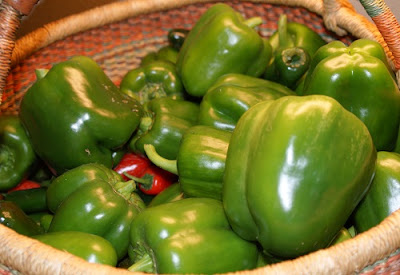 |
| Me fanning myself coquettishly with a large brussels sprouts leaf (Falstaff is the variety). No, I'm not barefoot. |
Even when the knobs refuse to form, planting brussels sprouts is worthwhile, as the leaves are a fine and tasty green with more substance than kale. Once we had several freezing nights and cool days, the leaves took on an incredible sweetness. I must say that they are my favorite green. The knobs are just a bonus. Next year I will try amending the soil with just a bit of boron (a sprinkling of borax, which you can find in the store among all the laundry and household cleaners, right next to the washing soda). This fall someone speaking on organic gardening said that brussels sprouts were the only vegetable that responded to boron amendment. So maybe that's my missing ingredient. We'll see.
 |
| Brussels sprouts from a previous year. |
Brussels sprouts can stand, unprotected, in the the garden until the temperatures start falling below 21 degrees Fahrenheit. Mine had been protected from marauding insects by row cover (suspended by the PVC pipe hoops visible in the photo) and when the night time temps started falling into the 20s I added a second layer of row cover, probably not necessary, but I was surprised by a couple of nights when it fell to 19.
Other vegetables grew under plastic, once the daytime temperatures stopped routinely exceeding 60 degrees, which was sometime in mid- or late November. We even had 50s and 60s for a good part of December. But that's changing. At this moment large snowflakes are falling and the temperature hasn't yet hit 30 degrees, although it is mid-afternoon. In two days, the low is supposed to hit 10 degrees F (approximately -12 degrees Celsius).
So I spent Saturday preparing for real winter (finally). Along with harvesting the brussels sprouts, I pulled back the plastic on all of the other winter beds to see if anything else was ready to pick. Before replacing the plastic I pulled blankets over everything, hoping that would keep things snug and alive. One small cabbage was ready, and one little radicchio, as well as some small lettuce, purple mustard and arugula. The big surprise was the broccoli, which I had not looked at for at least a week.
When I last opened the broccoli tunnel, I stripped all of the leaves off of several plants (although not as tasty as brussels sprouts greens, they're good for putting in soups and curries, etc.), as well as cutting any small florets. The main bunches of florets had been picked weeks earlier. Imagine my surprise on Saturday when I discovered that more florets had formed, even on a couple of the plants that had been completely stripped. The leaves looked ragged and perhaps had evidence of some disease, but they had formed florets, in spite of some chilly nights and short days. So I pulled the blankets over them and if they survive this coming week, I'll see whether they continue making florets.
Under another plastic tunnel stands one lone plant of purple sprouting broccoli, which was bred to stand through winter and offer an early spring harvest. We'll see how that does. The garden is always just one big experiment.
For now I'll just watch the snow blow and look forward to roasting my homegrown brussels sprouts, or steaming up some of their greens, or the little broccoli florets. When it thaws again I'll check under the layers and see how the veggies are doing in their snug little beds.
















































